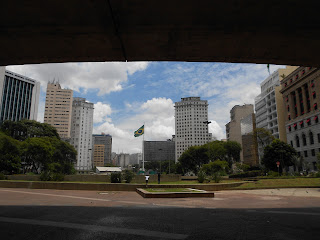When I first arrived at the Twelve Tribes I was absolutely stunned by the grand vista as well as all the pretty details, such as gardens at the base of every tree or little stone fountains. I arrived on Shabbat and spent the next day playing soccer, dancing, conversing and dining. While there are none of the difficult rules of the meditation center, the religious aspect can be oppressive at times and Jesus finds his way into each conversation.
The people here believe that we are at the end of an age and Yashura (Jesus) will come for the final judgement in about sixty years (just an estimate). The duality between God and Satan accompanied by a firm belief that they have found the one true path to salvation, keeps them from appreciating all the many diverse aspects of life. Nonetheless they are patient, respectful, generous, and loving. I have never seen such a cohesive community in my life and I didn’t see one single conflict during my stay. There isn’t any hypocrisy and they actually live what it says in the bible, which has quite a few lessons to learn from. For example, I can only pray that one day I will have their conviction, their love of life and other people, and such strong relationships.
During my stay I learned how to milk and care for goats, grow, package and consume Mate, irrigate fields of lemon-grass, train grape vines, and I learned a song on guitar called: Love Causes Peace to Flow (it actually sounds good). I also managed to avoid being bitten by the cobras that kill you in about thirty minutes, depending on the snake.
More frightening than the cobras was the power of persuasion that the community possessed. The other WWOOFer (person who works on farms for room and board) decided to get “babtised.” Before arriving, she was an atheist studying permaculture in Columbia. Now she is giving away her possessions and her studies to spend the rest of her life serving the tribe. She also won’t see her family again until they make the 3,000 or so mile journey to southern Brazil.
After the baptism I decided it was time to move on and packed my things. I said my thanks and farewells and was granted gifts. These included tribal mate, brown sugar, incence, a lemon-grass candle, and soap. My next stop would be the last: Florianópolis, an island whose praises were sung throughout my journey so much that it had gained almost mythological status in my mind.
http://www.twelvetribes.com/
Home
My corner
Lemon-Grass
The farm (Fish and Baptismal pond on the right)
Mate Factory





























